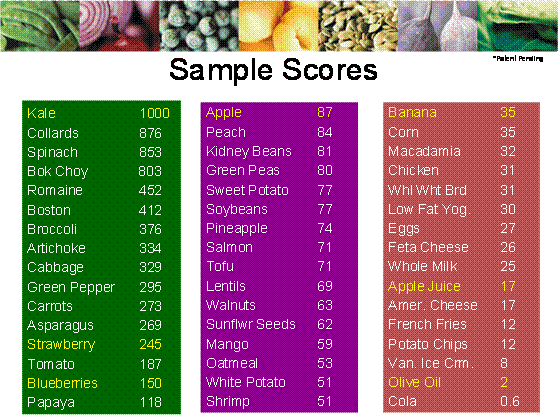
What is “Nutrient Density”?
Written by Fritz Nugent
Recently, I had a nutrition consultation with a competitive CrossFit athlete and they asked me how to clean up their nutrition. First, I checked to make sure that they were sleeping enough (they were) and managing their life stressors (seemed like they were). Then we delved into nutrition.
Their goal was to improve performance. This is my favorite goal to help athletes with because the results are often very quick for those who are self-aware.
During our conversation, they asked, “What is nutrient density?” I thought it was a marvelous question. No one had ever asked me this before. I could tell they felt dumb for not knowing. I reassured them. If they don’t understand this concept, then surely a large majority of our community also may have this same question! I thought back to all the instances when I had used this terminology and wrongfully assumed the person on the receiving end of the conversation knew what it meant. Apparently, most people have no idea!
What is nutrient density?
Nutrient density is defined as the ratio of nutrients to calories. Let’s break this down.
What are macronutrients?
Some of you may know the term “macros”. Macro is short for macronutrient. There are four:
- carbohydrates
- fats
- proteins
- water (yes, water is a macronutrient)
How are macronutrients measured?
Macro means large, so macronutrients are large nutrients! These nutrients (excluding water) are measured in GRAMS. These nutrients provide energy which we call CALORIES.
However, in the definition of nutrient density, macros matter less, and micronutrients become more important.
What are micronutrients?
Micro = small, so micronutrients are small nutrients. Micronutrients are vitamins and minerals. We could add fiber and phytonutrients into this category as well.
How are micronutrients measured?
These nutrients are measured in milligrams (mg, a 1000th of a gram) and micrograms (mcg, a 1000th of a milligram!). Micronutrients like potassium are measured in mg, and vitamin D is measured in mcg. We need much less of these molecules than the macronutrients!
Formula for Nutrient Density
Now you know the difference between macro- and micronutrients. Back to the definition of nutrient density: micronutrients divided by macronutrients. In simple terms, nutrient density is the concentration of micronutrients within food.
Which foods have high nutrient density?
Check the picture to see the top foods for nutrient density:

(picture from http://peertrainer.com/diet/nutrient_density.html)
Kale has the top score of 1000, meaning that per unit of energy, it contains the highest density of vitamins and minerals. Strawberries scored 245, meaning they contain 1/4th the nutrient density of kale, apples about 1/11th (with apple juice 1/5 the density of apples!), and olive oil scored 2 out of 1000. Even though olive oil does contain some vitamins, minerals, and phytonutrients, the food is pure fat which is energy-dense, which heavily decreases its nutrient density.
Why increase nutrient density?
For your health. All vitamins, minerals, fiber, and phytochemicals play crucial roles in our bodily processes. Providing adequate daily intake can help keep our bodies running well, keep chronic diseases at bay, and improve performance in all forms – physical, mental, and emotional.
The moral of the story: eat your vegetables and fruits!
Eat your vegetables!